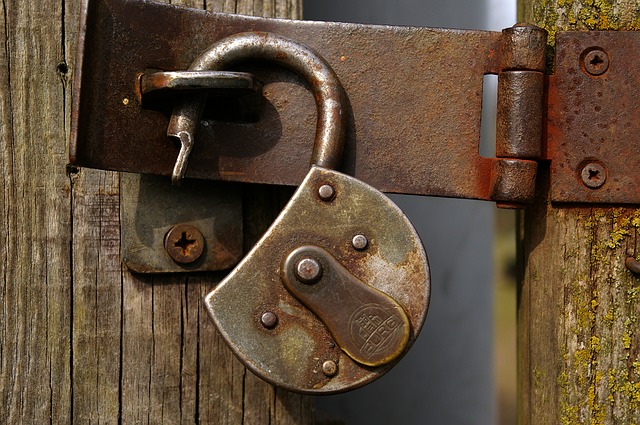
Do you have a unique value proposition?
So, you want to have the best escape room marketing in town, do you?
Alright, answer me this: Why does your escape room exist?
I’m not asking what your escape room does, or how the game works. Why are you in business?
It’s a simple question, but crafting a compelling answer is no cake walk. Your business can’t pass go and collect $200 if you haven’t defined your unique value proposition, or UVP.
In case you haven’t heard, escape rooms have been popping up like mad in the last decade. Estimates say that between 2010 and 2015, almost 3,000 of these new live-action puzzles opened their doors.
That could easily be higher, though, given that Toronto, a city of only 2.6 million has 45 escape rooms alone.
“We were the fourth escape room in Houston when we opened in November 2015,” says Brandon DuBois, owner of Cipher Escape Rooms. “Six months later, there are around ten.”
Although you and the other local escape rooms might run different games with different themes, your customers are still making a choice to spend time and money with one of you at a time. Depending on their experience, you may or may not have a second shot…
At the end of the day, you want your business to stand out. Having a strong UVP will convince potential customers to try your game before anyone else’s.
And I’ve got some good news for you: Few escape rooms currently market their UVP. That means that with a little elbow grease, you could draft and design a solid UVP that can catapult your escape room into a marketing league of its own.
So, what are we waiting for?
UVPs: The Escape Room Edition
A UVP is a promise to your potential customers, the promise of value. It’s your one shot to convince someone why they should buy from you and not the guy down the road.
To craft a killer UVP you must…
- Stay Relevant: Explain how your product solves customers’ problems or improves their situation.
- Offer Examples: What specific benefits does your escape room experience deliver?
- Be Different: Tell your target audience why they should buy from you and not from the competition.
A UVP is NOT:
- A positioning statement (“Canada’s Largest Escape Room Company”).
- A tagline: (“Think Different”)
UVP Components:
- A short headline
- A subheadline (aim for 1-2 sentences)
- A call-to-action
- A visual to helps drive the message home
If you want to see UVPs in action, there are a lot of great lists out there with examples from different industries. When it comes to escape room UVPs in particular, however, there are currently more examples of what not to do than what to do.
Below are a few lessons you should remember when you’re designing your unique value proposition.
Do’s and Don’ts: How to design the perfect UVP
Lesson #1: Don’t put the cart before the horse
The more you research UVPs, the more you’ll notice one thing they all have in common: they’re the first thing you see on someone’s landing page. Nothing should compete with your UVP.
These escape rooms, however, are getting a little ahead of themselves. They’re trying to get me to book a game before they’ve convinced me to care.
I’ve got to dig through these websites to find anything their UVPs. That’s not a great strategy considering that you’ve only got 5 to 30 seconds to catch your potential customer’s attention.
If you were standing with someone in an elevator, I don’t think you’d pitch them to try your game by saying “Book Now.”
So what should you do?
Lesson #2: Add value that’s relevant to your target audience
Your UVP, as the name implies, communicates something valuable about your tour that no one else has. But what’s valuable to you might not resonate with your customers.
“The way you speak about your services is often very different from how your customers describe it,” says the founder of ConversionXL, a digital marketing blog. “The answers are outside of your office.”
To find those answers, you might look to social media. Or you could interview customers with a pre- and/or post-game survey.
With your escape room’s booking software, you can create a questionnaire for your customers when they reserve a game.
In the pre-arrival questionnaire you might ask questions like, “What’s one thing that made our escape room stand out from another activity you could’ve done?”
Then after participants have experienced your game, you could send them a custom review email with a link to a survey asking follow-up questions. For example, “How would you describe us to a friend?” or “How did you feel during your escape room experience?” And of course, don’t forget to have your customers leave you a review!
To sum it up, make sure you deliver value in a way your audience can understand and appreciate.
Lesson #3: What Would Hemingway Do?
The last trick though, is to add value without launching into your life story. Remember, you’ve only got five to thirty seconds of your customers’ attention spans! Keep it short, a la Hemingway.
The Exit Room’s UVP definitely catches my attention with its short and intriguing headline. But once I see the 142-word block of text below, my enthusiasm wanes.
But buried within those paragraphs exists one, beautifully crafted sentence: “Whether you are having a night out with friends or family, celebrating a special event, planning a team-building activity, or simply wanting a diversion from the doldrums of your workweek, The Exit Room will provide you an unforgettable live-action gaming experience.”
This line identifies the target audience, describes their needs, and states how The Exit Room’s “unforgettable” game can address those needs.
With just that sentence in the subheading, and a clear CTA like “Book Now” underneath, The Exit Room could deliver a much stronger first impression.
The Final Mile: Drafting Your UVP
It’s time to write this darn thing already! There are plenty of helpful guides to get your creative juices flowing. Here are a few in order of shortest to longest:
Template 1:
We help ___ do___ by doing ___.
Template 2:
For ___ (target customer) who ___ (statement of the need or opportunity), our (product/service) is ___ (product category) that (statement of benefit) ___.
Template 3:
(Company Name), a ___ (market category) provides ___ (benefit/differentiator) for ___ (customer segment(s)), which need ___ (critical need) unlike ___ (competitor and product) which ___ (competitor’s weakness relative to) ___ (critical need of customer segment).
Try out a few versions with each of these templates and see which one helps you write that clear, concise, and compelling UVP that your customers will love.
What’s next?
Your UVP is a make or break part of your escape room’s marketing strategy. But know that your UVP can change as your customers or the market changes. As long as you keep a pulse on these factors and update your UVP as necessary, you’ll stay ahead of the curve.
No matter where you are on your UVP journey, whether you’ve never made one or are ready to revisit your current UVP, we’re here if you have questions!




